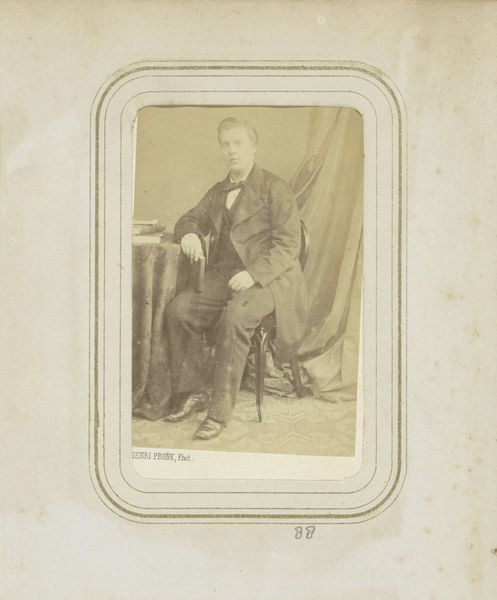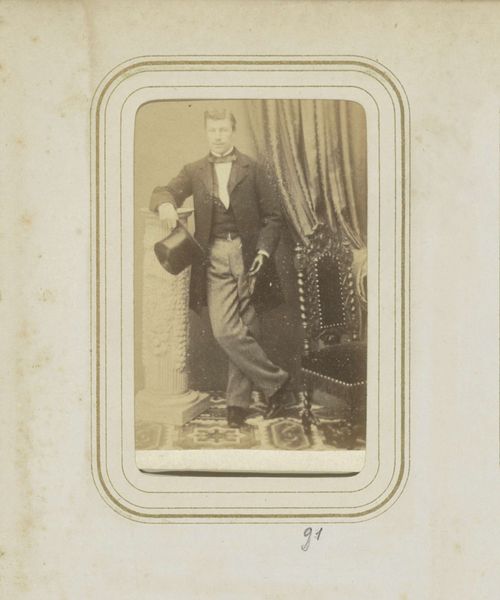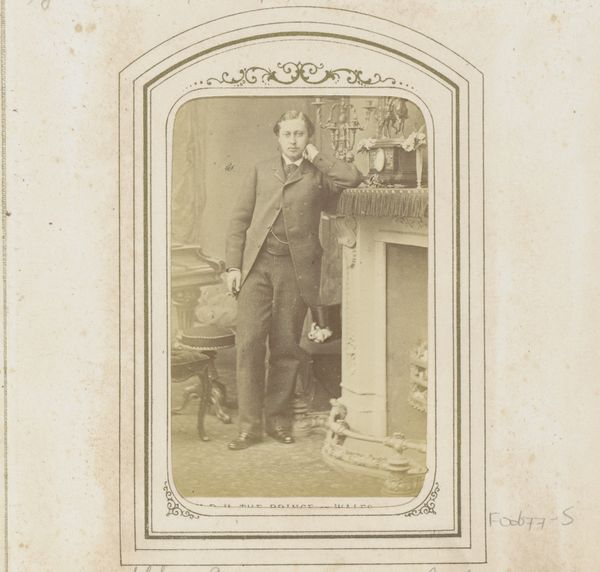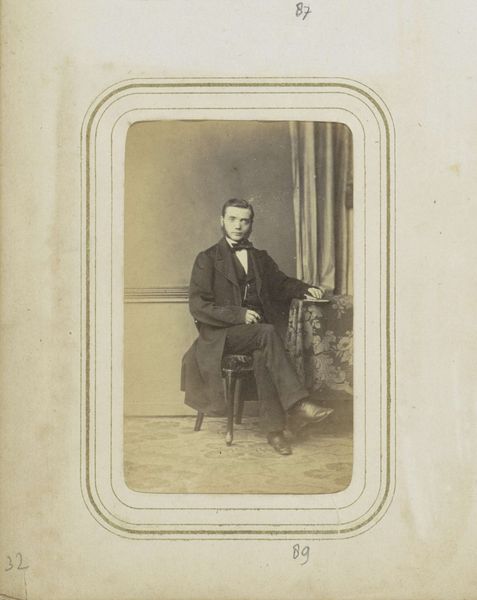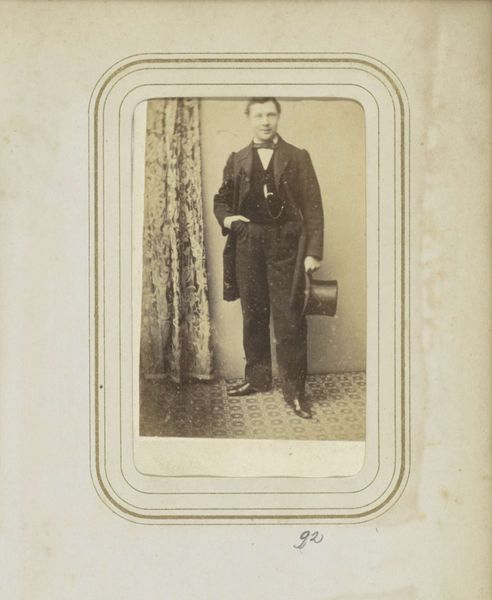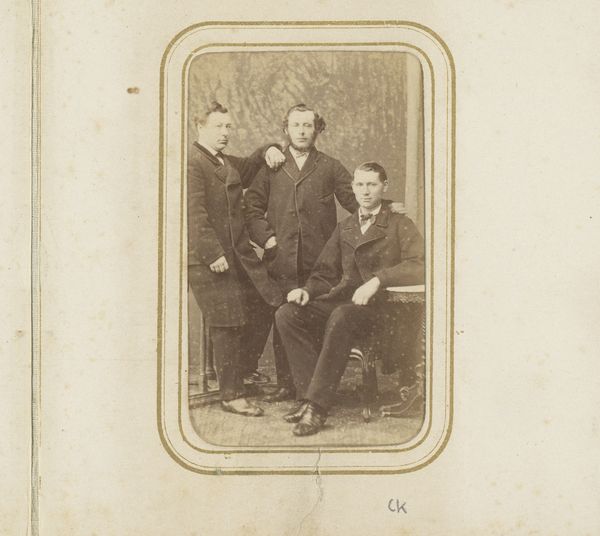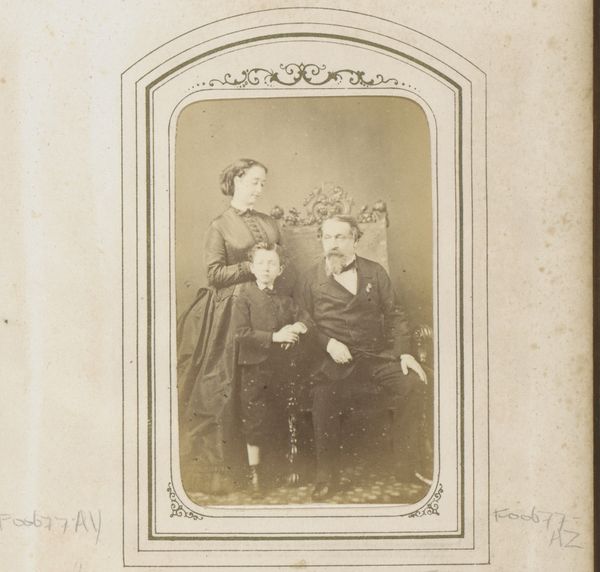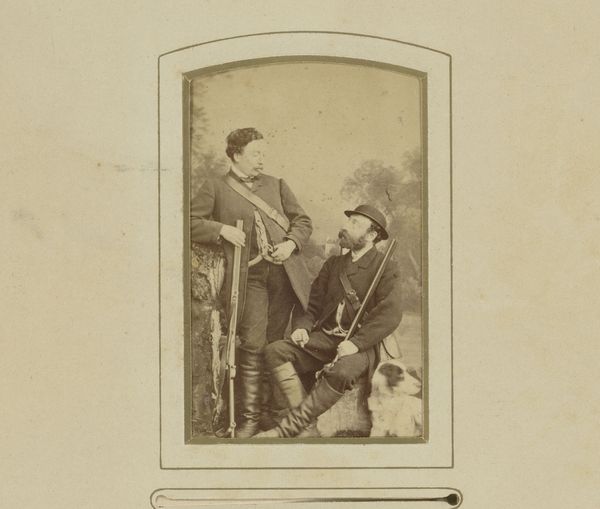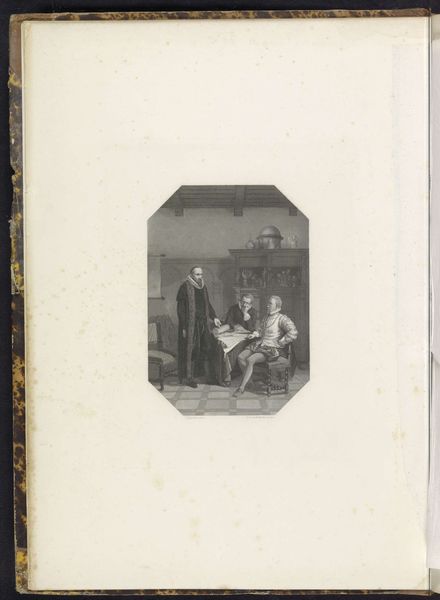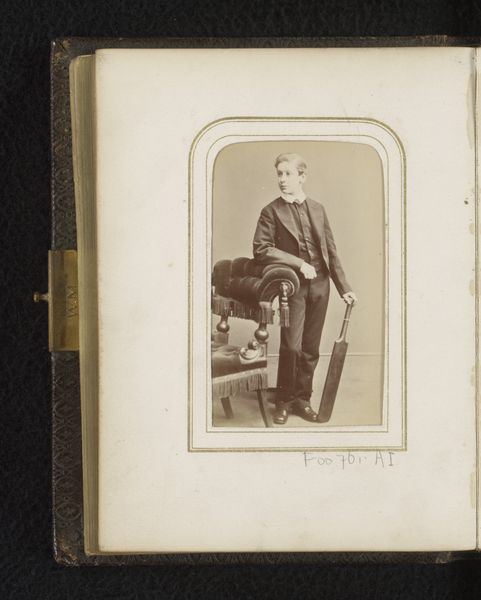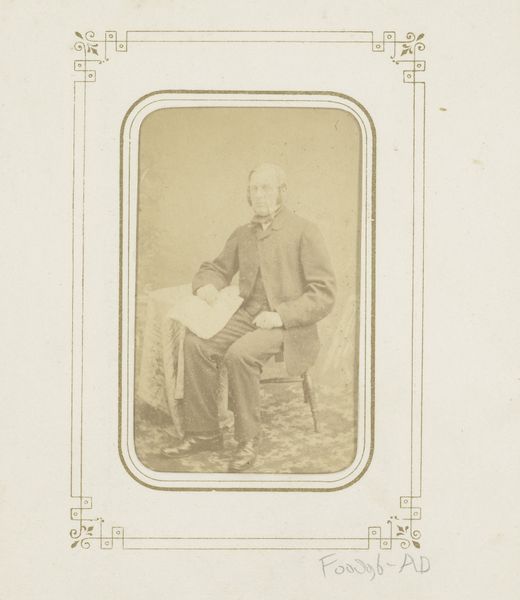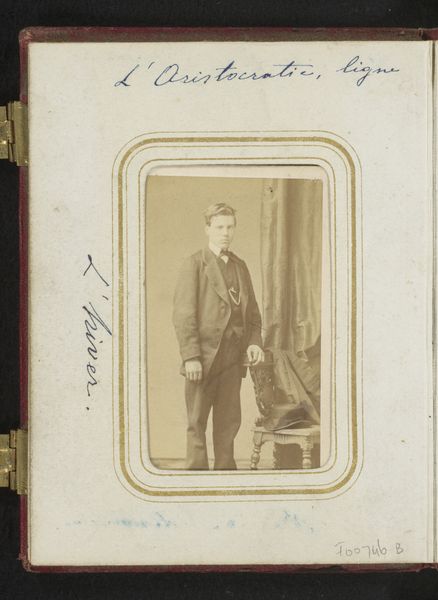
Dimensions: height 86 mm, width 59 mm, height 99 mm, width 62 mm
Copyright: Rijks Museum: Open Domain
Editor: So, here we have Alphonse Plumier’s, *Portret van een man met een lange jas* created sometime between 1840 and 1877. It's a daguerreotype, which is an early form of photography, and it's got this haunting, almost ghostly quality to it. What stands out to you about it? Curator: What I see is a compelling tension between the rigid formality of the portrait and the implied social dynamics of the time. Consider the sitter's attire, the pose, and even the technology used. This daguerreotype captures a specific performance of masculinity within a rapidly changing society. How do you think his gaze reflects or perhaps resists, the societal expectations placed upon him? Editor: That's a great point, his gaze is intense. It’s like he is trying to look strong but also seems self-conscious, maybe aware he is being observed. Were there any constraints on who could be represented at the time, or who would have access to this medium? Curator: Absolutely. The daguerreotype process was expensive and time-consuming, inherently limiting access to the upper echelons of society. So, in thinking about who is represented, and who *could* be represented, it opens up questions of power, privilege, and the construction of historical narratives. To what extent does this portrait reinforce or challenge existing social hierarchies? Editor: I guess it’s both, because on the one hand it reinforces those social stratifications through its exclusivity, but at the same time, maybe having your photograph taken, being ‘immortalized’ like this, might have been quite radical in itself back then. I hadn’t thought of that! Curator: Exactly! These contradictions are often the most fertile ground for understanding the complexities of art and its relationship to society. What did you gain from our talk? Editor: Considering art within a broader social and historical context definitely changed how I see the work. Thank you!
Comments
No comments
Be the first to comment and join the conversation on the ultimate creative platform.
